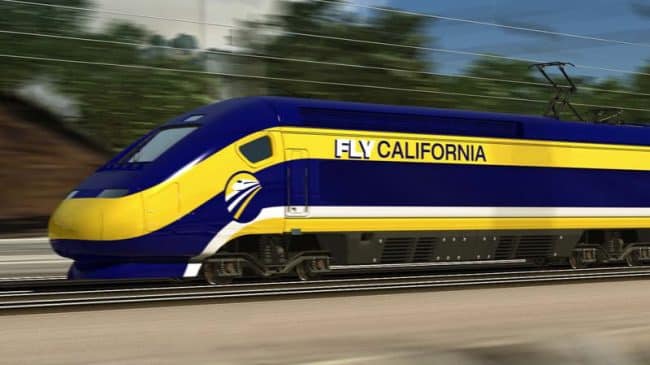The California High-Speed Rail Authority just received the green light from the federal Surface Transportation Board to begin building a 114-mile stretch of the planned statewide high-speed rail project. And yet, with the project underway, the agency still doesn’t have a sensible business plan that shows from where the money to build and operate the system will come.
The $10 billion authorized by voters when Proposition 1A passed in 2008 won’t even cover the costs of constructing the initial segment, between Merced and Bakersfield. When Prop. 1A passed, California was counting on a lot more federal funding, which is extremely unlikely to arrive.
New House Majority Leader Kevin McCarthy, R-Bakersfield, has vowed to “do all that I can to ensure not one dollar of federal funding goes to boondoggles like [California’s] high-speed rail.”
Similarly, Rep. Jeff Denham, R-Modesto, told the Register, “Until I see a viable business plan for high-speed rail in California that is fiscally sound and supported by private dollars, I will continue to hold the rail authority accountable to the voters and ensure no additional federal tax dollars go to this project.”
As a result, the rail project will have to rely on state funds. Gov. Jerry Brown and the Legislature have agreed to send 25 percent of the state’s cap-and-trade revenue, money that businesses will have to pay to offset emissions, to support high-speed rail. However, that money won’t be nearly enough, and the plan has already prompted several lawsuits because those funds are supposed to go to projects that actually reduce greenhouse gases, something the high-speed rail line is unlikely to achieve for at least 20 years.
The California High-Speed Rail Authority is also counting on private investors to cover some of the construction costs. But there aren’t any private rail companies lining up to put billions of their own dollars on the line to build sections of the rail system themselves.
One reason for the lack of private interest is dubious ridership forecasts. It’s nearly universally agreed that the Rail Authority has wildly overestimated its ridership predictions. A 2013 Reason Foundation study concluded ridership estimates are 65 percent to 77 percent too high, and the state will need $120 million to $370 million every year in taxpayer subsidies just to cover the operating costs and financial losses
Given the lack of funding to build the system and the annual financial deficits that it will likely incur if built, it’s hard to fathom why the state is moving ahead.
Proponents claim that California needs an alternative to planes and cars because airports and highways are at their breaking points. Yet, airlines are buying larger planes, and air traffic control modernization – though already decades late due to the Federal Aviation Administration’s bureaucratic failures – will increase air travel capacity. And cars offer flexibility that rail cannot, especially when you start to think about people arriving at a high-speed rail station that is still 20 or 30 miles from their final destination in a Southern California or Central Valley city with limited transit options.
Others point to successful high-speed rail lines in Western Europe and Japan and argue the United States needs join the club. But those countries built high-speed rail because conventional rail travel was already busting at the seams. And those countries have different spatial structures because they were developed around walking and mass transit. When the Tokyo-Osaka line was built in Japan, fewer than 25 percent of driving-age residents owned a car. The current car ownership rate in California is more than 85 percent.
Passengers are willing to take high-speed rail in those other places because travel times are competitive with cars or planes. But when the High-Speed Rail Authority decided California’s system needed to serve the Central Valley, the two hour, 40 minute trip that voters were promised from Los Angeles to San Francisco turned into a four hour odyssey, which would be much slower than air travel – even factoring in getting to the airport, security and other delays.
The rail system that just got the green light to proceed is much slower and more expensive than the one promised to taxpayers in 2008. And the state still has no idea where the bulk of the money to build it will come from. Only in California would those problems be seen as sign to move ahead with construction.
Baruch Feigenbaum is a transportation policy analyst at Reason Foundation. This article originally appeared in the Orange County Register.

